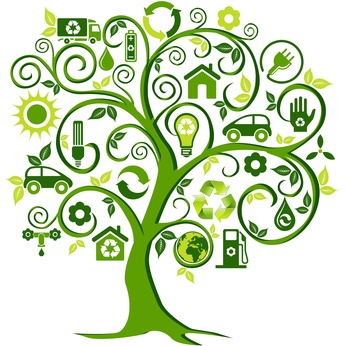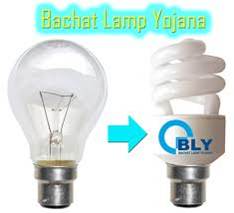| Green Lifestyle Through Green Technology
Consumption: The Two-edged Sword The growth in consumption over the last century has been unprecedented in terms of scale and diversity. Across the globe, the average standard of living has gone up. More and more people have access to basic needs like electricity, water and sanitation. Millions now enjoy hot water and air conditioning, personal computers and air travel. People are more connected to each other than ever before. Globalisation and advertising have increased people’s aspirations. This changing lifestyle is of course not evenly distributed, leaving many pockets of inequality aspiring to adopt this lifestyle. The changing lifestyle with its expanding consumption exerts pressure on the environment. Extraction of resources and the associated environmental degradation due to mining and quarrying, the emissions due to production and transport of these products, the solid and liquid wastes as a result of production and use of these products polluting the land, water and destroying the ecosystem are the prices we have paid to sustain this lifestyle and consumption pattern. With growing populations and their expanding aspirations, these impacts will only increase. While most of the benefits of this lifestyle are reaped by the richer sections of society, the impacts are to a great extent borne by the poorest. Rising Green Consumerism However, with growing environmental consciousness, there is a growing movement towards green consumerism, especially in emerging economies. The Green Consumers Series, 2010 research highlights the fact that Indian (and other developing) consumers are increasingly becoming aware that their decisions have an impact on the environment, and that these decisions have real consequences that damage the world, with air and water pollution being foremost in their concerns. Other factors include issues like climate change, species loss and shortages of fresh water - all factors affecting the planet’s ability to support life. Economy and the cost of energy and fuel elicit the greatest concern among American, French and British consumers. 1 According to a survey, making green choices is a high priority for around 60 per cent of Indian consumers, with 95 per cent of them claiming to do so in order to protect the environment. Today’s youth, aged between 18 and 34, especially women, are judged to make the most sustainable choices and are more receptive to the green marketing campaigns.2The Greendex Survey, 2012 ranked India in the top tier of green consumerism, along with China and Brazil. The lowest scores were earned by consumers in industrialised countries. However, consumers in the rapidly growing economies of India and Brazil, followed by Russia, have seen their Greendex scores decrease to a great extent since 2010. It is obvious that the economic slowdown and the climate change scares are yet to catapult the people into green action. Sustainable consumption remains a global challenge – more so with developed countries – but with the developing and emerging economies catching up very rapidly. |
| National Geographic conducted its inaugural Greendex survey in January 2008. The first Greendex survey of 14 countries around the world ranked average consumers in those countries according to the environmental sustainability of their behaviour. National Geographic replicated these studies in 2009, 2010 and now again in 2012 in order to track the progress or the lack thereof. Greendex is a comprehensive measure of consumer behaviour in 65 areas relating to housing, transportation, food and consumer goods. Consumers were asked about their energy use and conservation, transportation choices, food sources, relative use of green products versus conventional products and knowledge of environmental issues. |
| The Indian Context In traditional societies like India, concepts of sustainability such as reuse and recycling are embedded in culture and traditions. 3 Things are repaired when they stop working. In fact, jugaad4 is a truly Indian adaptation strategy that is now finding global sanction, even appreciation. Many small-scale industries thrive on this culture. Cobblers who mend shoes, raddiwalas who collect newspapers, disposable bottles and scrap metal, bartanwalas who exchange old clothes for new utensils, etc., are all part of this ecocosm.However, this lifestyle is fading under the slew of cheap products flooding the market. Disposable batteries, pens, cameras, diapers, boxes and containers, etc., are prevalent in the market as well as in homes. Pottery has given way to plastic; dona pattal 5 has made way for polystyrene. A 2012 report by Crisil Ltd, a credit rating agency said that consumption in rural India is growing faster than in urban India for the first time in two decades. This boom is fuelled in part by government-sponsored schemes that have increased the income in rural houses through non-farm activities. However, another major reason is the exposure of migrants to the high consumption lifestyle of urban India. With a staggering one billion consumers and a solvent middle class of currently more than 250 million people, India has a large impact on green house gas emissions and environmental damage.Green Technology as a Driver Technology has the potential to play a key role in mitigating this damage. Using green products and services will make an invaluable contribution to reducing emissions that influence climate change. With consumers becoming more aware of the environmental impact of products and services, companies are spurred into taking action to green their products and processes. If we take the example of television, there has been a shift from the cathode ray tube technology to the more energy efficient liquid crystal display (LCD) technology. Almost every household has at least one television set. A walk through a slum in Mumbai or Delhi will reveal how widespread the ownership of a TV set is. Globally, over one-third of the consumers surveyed reported that their household contains an energy saving television. Since 2008, ownership of these types of televisions has increased broadly, particularly among Australians, Germans and Indians, reflecting the widespread adoption of LCD technology in televisions. 6 It is the same with refrigerators.Another green product that has taken over the market is the energy efficient bulb. Consumers are choosing energy efficient compact fluorescent light (CFL) bulbs over the age old incandescent bulb. The states of Tamil Nadu and Karnataka in India have banned the use of incandescent bulbs in government departments, public sector undertakings, various boards, cooperative institutions, local bodies, and institutions running on government aid. 7 While a complete nationwide ban has not been put in place, the Government plans to replace 400 million incandescent light bulbs with CFLs under the Bachat Lamp Yojana programme by 2012. The energy savings and resultant carbon emissions savings will be about 55 million tonnes per year.8 Currently, light emitting diode (LED) lamps offer an energy efficient option over even CFLs.The principles of energy efficiency can be applied to not just products but also processes. Many industries are adopting energy efficiency measures mainly spurred on by economic reasons. The industry is investing in load optimisation through energy efficient motors and equipment as well as demand side management. Another aspect is the fuel used. A fuel switch to a less carbon intensive or a renewable fuel, coupled with energy efficient systems offers immense environmental and economic gains. Sugar mills across the country have adopted biomass fuels like bagasse and risk husks (waste products from agriculture and food processing industry), replacing coal as the dominant fuel. Biomass gasifier technology is used not only in industries but also as a source of decentralised energy for household purposes. Transport is a particularly energy intensive sector. With the rise in ownership of private vehicles, this sector will continue to contribute substantially to climate change. However, this sector is also under pressure to conform on two accounts of air pollution and carbon emissions. Technologies like hybrid electric vehicles, already prevalent in many Western markets are slowly making inroads in India. Reva, a home-grown technology, is now a familiar site on the roads. While the Honda Civic and Mahindra Scorpio are already available, Toyota, Maruti and Nano are soon to launch their hybrid vehicles. The Indian Government has approved a INR 230 billion ($4.13 billion) plan to spur electric and hybrid vehicle production over the next eight years, setting itself an ambitious target of 6 million vehicles by 2020. 9 Consumer belief that the automobile industry has one of the greatest potentials to make an adverse impact on the environment and their acceptance of electric vehicles will help in mainstreaming this trend.Housing is another sector where Greendex has seen an improvement due to increased sustainable behaviour, especially in India. It is also a sector that contributes substantially to carbon emissions. Green buildings are seen as a panacea to this problem with both the government and the private sector promoting it through rating systems. Green buildings are often simplified to the operating energy primarily for lighting, space, heating and cooling. Energy efficient lighting and air conditioning options have flooded the market and are showing a huge uptake. However, the lion’s share of the impact is due to building materials like cement, steel and bricks. Bricks are produced through age old energy and resource intensive processes, accounting for 8 per cent of the national coal consumption. Energy efficient technologies like the Vertical Shaft Brick Kiln and the Zig Zag kilns can reduce fuel consumption by almost 40 per cent. The fly ash brick technology uses waste fly ash from power plants and converts them to building blocks with zero coal consumption and minimal electricity use. Construction technologies and techniques like use of pre-fabricated elements and rat trap bonds also contribute towards reducing both resource and material consumption. |
| Inhabitants of the Development Alternatives World Headquarters building in New Delhi made a lifestyle choice on temperature control in the building. Instead of the standard 22-24°C temperature, they elected to broaden the range to 18-28°C and have adjusted their attires, contributing to immense savings in electricity and carbon emissions. |
|
We are faced with some inevitable truths. The population will rise, people’s aspirations will increase, consumption will escalate, environmental damage will continue. Green technology offers us the opportunity to mitigate some of the damage caused while still meeting the present and future needs of the people. Paradoxically, it was technology during the industrial revolution that enabled the high consumption lifestyles. However, technology is just a tool. For technology to have the desired impact, we need to couple it with government policies and financial mechanisms that allow the uptake of greener options over conventional ones. Many governments around the world have been taking their first steps in this direction. The need of the hour is to build a momentum and then accelerate forward. The most important step, however, is to bring about a paradigm shift in the way we think. Consumer behaviour is the key to bringing about the lifestyle change we want. We are the consumers and it is our lifestyle that we need to green. q Kriti Nagrath End Notes
|
